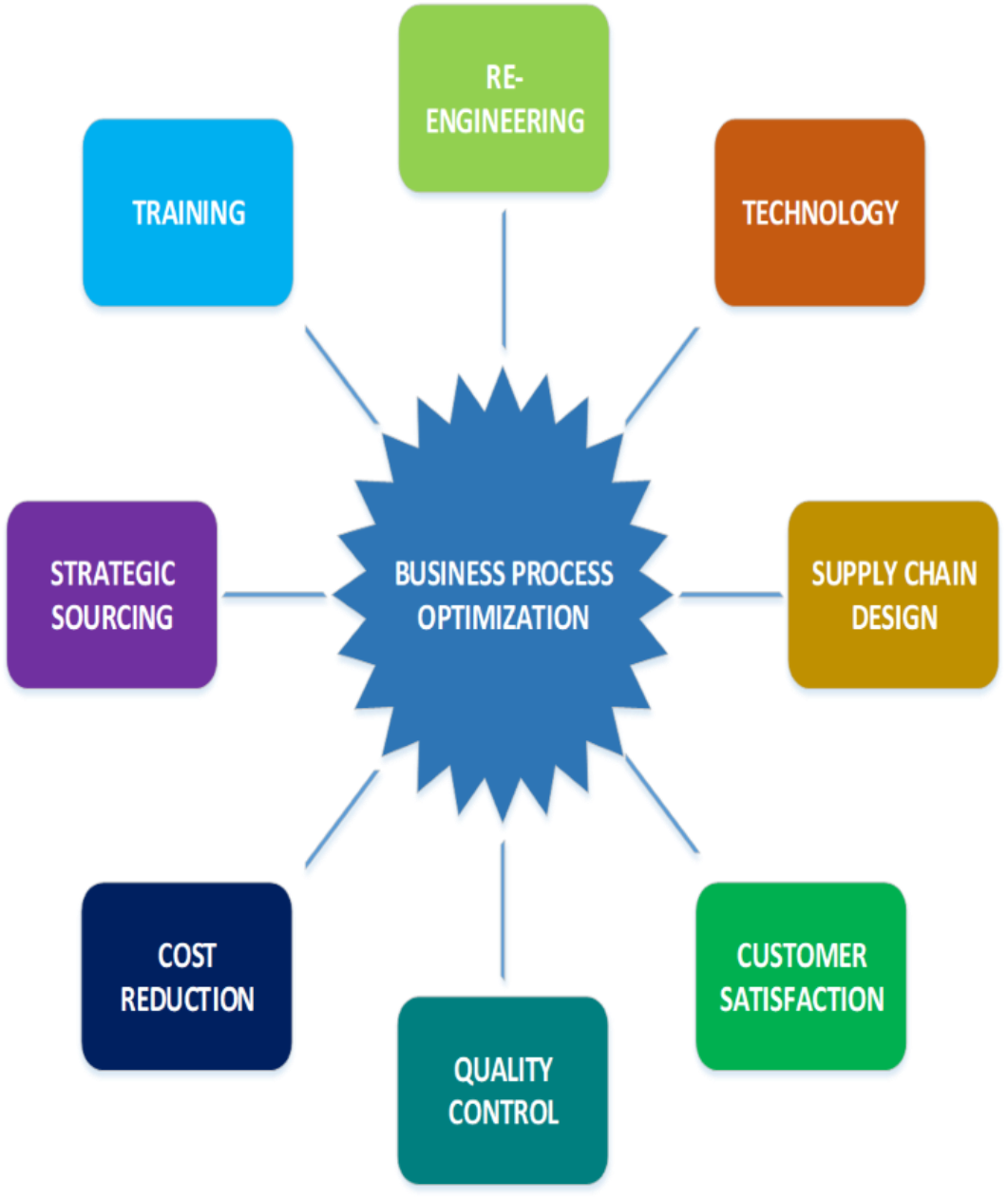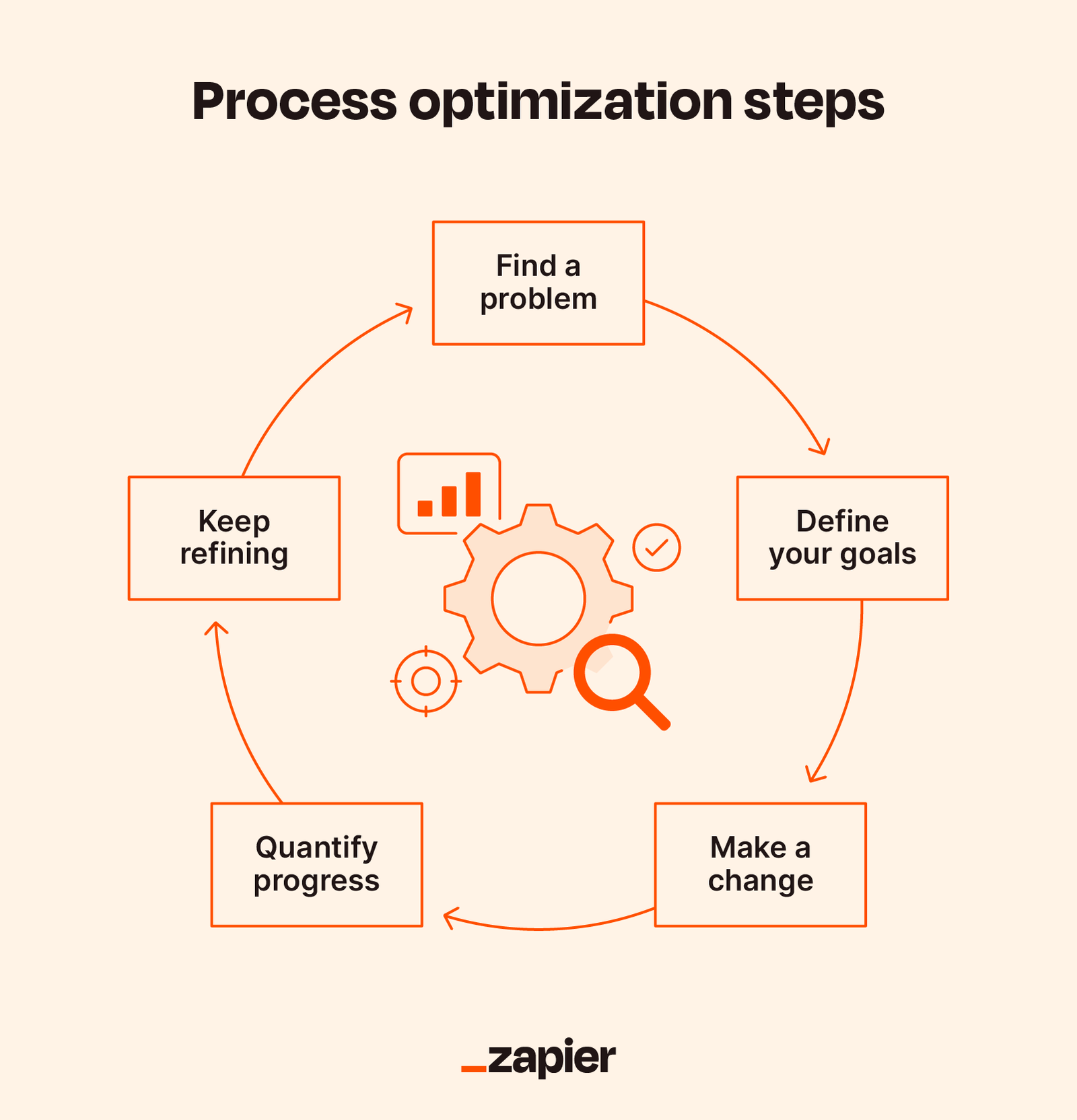
When it comes to managing a business, efficiency is key. That’s where the role of business optimization in lean management comes into play. In this article, we’ll explore how optimizing various aspects of a business can contribute to lean management practices, ultimately leading to improved productivity and profitability.
Lean management focuses on minimizing waste and maximizing value for customers. It’s all about streamlining processes and eliminating unnecessary steps or activities. Business optimization, on the other hand, involves identifying areas for improvement and implementing strategies to enhance performance. By combining these two concepts, companies can create a lean and efficient operation that delivers exceptional results.
Optimizing a business involves analyzing every aspect, from supply chain management to production processes, and identifying opportunities for improvement. This could mean implementing new technology, reorganizing workflows, or even training employees to work more efficiently. The goal is to eliminate any bottlenecks or inefficiencies that may hinder productivity and profitability. With the right approach to business optimization, companies can achieve a lean operation that not only saves time and resources but also delivers superior products and services to customers.
In the following sections, we’ll delve deeper into the specific ways in which business optimization contributes to lean management. From enhancing customer satisfaction to reducing costs, we’ll explore the various benefits that can be achieved through a well-optimized business. So, buckle up and get ready to discover the secrets of successful lean management through effective business optimization.
Business optimization plays a crucial role in lean management. By continuously improving processes and eliminating waste, businesses can streamline operations and enhance overall efficiency. This leads to cost reduction, improved productivity, and increased customer satisfaction. With the help of lean management principles, such as value stream mapping and Kaizen, organizations can identify areas for improvement and implement targeted strategies to optimize their operations. Business optimization is key to achieving sustainable growth and maintaining a competitive edge in today’s dynamic marketplace.

The Role of Business Optimization in Lean Management
Business optimization plays a crucial role in the implementation and success of lean management practices within an organization. Lean management focuses on eliminating waste and maximizing efficiency to achieve operational excellence. By optimizing various aspects of the business, organizations can streamline processes, reduce costs, and improve overall performance. In this article, we will explore the significance of business optimization in the context of lean management and how it can drive sustainable growth and success.
Streamlining Processes for Efficiency
Efficient processes are the cornerstone of lean management, and business optimization is instrumental in achieving this goal. By thoroughly analyzing existing workflows and identifying bottlenecks or areas of inefficiency, organizations can streamline their processes to eliminate waste and maximize productivity. This may involve reevaluating the allocation of resources, redesigning workflows, or implementing automation technologies. Business optimization facilitates the identification of areas where improvements can be made, allowing organizations to create leaner and more efficient processes.
One example of business optimization in lean management is the application of value stream mapping. This technique involves visually mapping out the flow of materials and information throughout the entire value chain. By analyzing the value stream, organizations can identify non-value-added activities and eliminate them, thereby reducing lead times and improving overall efficiency. Business optimization techniques like value stream mapping enable organizations to gain a comprehensive understanding of their processes and make data-driven decisions to optimize them.
Benefits of Business Optimization in Lean Management
Implementing business optimization strategies within a lean management framework offers several benefits. First and foremost, it helps organizations identify areas of waste and inefficiency, leading to cost savings and improved profitability. By eliminating unnecessary steps, reducing inventory, and optimizing resource allocation, organizations can significantly reduce operational costs. This, in turn, allows them to offer competitive prices to customers while maintaining healthy profit margins.
Furthermore, business optimization enhances the overall quality of products and services. By streamlining processes and reducing defects, organizations can deliver higher-quality outputs to their customers. Improved quality not only increases customer satisfaction but also reduces the likelihood of rework, warranty claims, and other costly issues. Business optimization ensures that lean management practices are aligned with a focus on delivering value to the customer, resulting in improved customer loyalty and long-term success.

Another significant benefit of business optimization in lean management is the ability to respond quickly to changing market demands. Lean organizations are known for their agility and adaptability, and optimization strategies enable them to stay ahead of the curve. By continuously monitoring and optimizing processes, organizations can identify emerging trends, customer preferences, and market shifts. This allows them to proactively adjust their operations, product offerings, and strategies to meet evolving demands, thus gaining a competitive edge in the market.
In conclusion, business optimization plays a vital role in the successful implementation of lean management practices. It enables organizations to streamline processes, reduce costs, improve quality, and respond effectively to market changes. By embracing business optimization within the context of lean management, organizations can achieve operational excellence and drive sustainable growth and success. Through continuous improvement and optimization efforts, businesses can stay ahead of the competition and deliver value to their customers.
The Role of Business Optimization in Lean Management – Key Takeaways
- Business optimization plays a crucial role in lean management.
- It focuses on eliminating waste and improving efficiency in business processes.
- By optimizing operations, businesses can reduce costs and increase productivity.
- Business optimization involves analyzing data, identifying bottlenecks, and implementing improvements.
- It helps organizations achieve their goals faster and stay competitive in the market.
Frequently Asked Questions
What is the importance of business optimization in lean management?
Business optimization plays a crucial role in lean management as it focuses on eliminating waste, improving efficiency, and maximizing value for customers. By optimizing business processes, organizations can streamline operations, reduce costs, and enhance overall performance. This is especially important in lean management, which aims to eliminate any activities that do not add value to the final product or service. Business optimization ensures that resources are utilized effectively, allowing companies to deliver high-quality products or services with minimal waste.
Furthermore, business optimization promotes continuous improvement within the organization. It encourages employees to identify areas of improvement, seek innovative solutions, and implement changes that lead to greater efficiency. This constant pursuit of optimization aligns with the core principles of lean management, which emphasizes the elimination of waste and the pursuit of perfection. Overall, business optimization is an integral part of lean management, enabling organizations to achieve higher levels of productivity, quality, and customer satisfaction.
How can business optimization be achieved in lean management?
Achieving business optimization in lean management requires a systematic approach that involves identifying and eliminating waste in all aspects of the organization’s operations. This can be achieved through various strategies such as value stream mapping, process improvement, and employee empowerment.
Value stream mapping is a powerful tool that helps organizations identify the value-adding and non-value-adding activities in their processes. By visualizing the entire value stream, organizations can identify areas of waste and inefficiency and develop targeted improvement plans. This enables businesses to optimize their processes, reduce lead times, and enhance overall productivity.
Process improvement involves analyzing and redesigning existing processes to eliminate waste and improve efficiency. This may include removing unnecessary steps, standardizing work procedures, or implementing automation and technology solutions. Continuous improvement methodologies such as Kaizen can also be utilized to involve employees in the optimization process, encouraging them to identify and implement small, incremental changes that lead to significant improvements over time.
Employee empowerment is another crucial aspect of achieving business optimization in lean management. By empowering employees to actively participate in the optimization process, organizations can tap into their knowledge and expertise to identify improvement opportunities. This can be done through training programs, cross-functional collaboration, and creating a culture of continuous improvement. When employees are actively involved in optimizing their own work processes, they become more engaged and motivated, leading to better results.

What are the benefits of business optimization in lean management?
Business optimization in lean management offers several benefits that contribute to the overall success of an organization. Firstly, it enables companies to reduce waste and inefficiency, resulting in cost savings and improved profitability. By eliminating non-value-adding activities, organizations can optimize resource allocation and make better use of their available resources.
Secondly, business optimization enhances operational efficiency, leading to improved productivity and shorter lead times. Streamlining processes and eliminating bottlenecks allows organizations to deliver products or services more quickly and effectively, meeting customer demands and expectations.
Furthermore, business optimization promotes a culture of continuous improvement within the organization. By encouraging employees to actively participate in the optimization process, organizations can tap into their creativity and problem-solving skills. This fosters a sense of ownership and engagement, leading to increased employee satisfaction and retention.
Lastly, business optimization in lean management improves quality and customer satisfaction. By eliminating waste and improving efficiency, organizations can deliver products or services of higher quality, meeting or exceeding customer expectations. This enhances customer loyalty and strengthens the organization’s reputation in the market.
What challenges may arise when implementing business optimization in lean management?
Implementing business optimization in lean management can pose various challenges that organizations need to address. One common challenge is resistance to change. Employees may be hesitant to embrace new processes or technologies, fearing the unknown or feeling overwhelmed by the changes. To overcome this challenge, organizations should invest in change management strategies, including effective communication, training, and involving employees in the optimization process. By addressing employees’ concerns and providing support, organizations can increase acceptance and adoption of new optimization initiatives.
Another challenge is the lack of data or inaccurate data. Business optimization relies heavily on accurate data to identify areas of waste and measure the impact of improvement initiatives. Organizations need to ensure they have reliable data collection mechanisms in place and invest in data analysis capabilities. This may require implementing new systems or tools to capture and analyze relevant data.
Additionally, resource constraints can pose a challenge when implementing business optimization. Organizations may face limitations in terms of budget, time, or expertise. It is important for organizations to prioritize optimization efforts based on their potential impact and allocate resources accordingly. They may also consider leveraging external expertise or partnering with consultants to overcome resource constraints and accelerate the optimization process.
How can business optimization in lean management contribute to long-term success?
Business optimization in lean management is instrumental in driving long-term success for organizations. By continuously improving processes, eliminating waste, and enhancing efficiency, organizations can gain a competitive edge in the market. This allows them to deliver products or services of higher quality, at a lower cost, and with shorter lead times, meeting or exceeding customer expectations.
Furthermore, business optimization fosters a culture of continuous improvement and innovation within the organization. By empowering employees to actively participate in the optimization process, organizations tap into their knowledge, creativity, and problem-solving skills. This leads to a more engaged and motivated workforce, resulting in higher productivity and better outcomes.
In the long term, business optimization enables organizations to adapt to changing market conditions and customer demands. By continuously reviewing and optimizing processes, organizations can quickly respond to market disruptions, identify new opportunities, and stay ahead of competitors. This agility and ability to adapt are crucial for long-term success in today’s dynamic business environment.
Overall, business optimization in lean management is not just a short-term initiative but a strategic approach that drives continuous improvement and long-term success for organizations. By embracing optimization as a core principle and investing in the necessary resources and capabilities, organizations can achieve sustainable growth, profitability, and customer satisfaction.

Final Thoughts: The Power of Business Optimization in Lean Management
And there you have it, folks! We’ve explored the fascinating world of business optimization in the context of lean management. It’s clear that this powerful combination holds immense potential for organizations looking to streamline their operations and maximize efficiency. By integrating lean principles with optimization strategies, businesses can unlock a whole new level of productivity and profitability.
Throughout this journey, we’ve seen how business optimization can help identify and eliminate waste, reduce costs, improve quality, and enhance customer satisfaction. From process optimization to data analysis, every aspect of the business can benefit from a mindful and systematic approach. With the right tools, techniques, and mindset, businesses can achieve remarkable results and gain a competitive edge in the market.
So, whether you’re a small startup or a multinational corporation, it’s time to embrace the power of business optimization in lean management. Remember, it’s not just about doing things faster or cheaper—it’s about doing things smarter. By continuously seeking improvement and challenging the status quo, you can create a culture of excellence that propels your organization towards success. So, go forth and optimize!